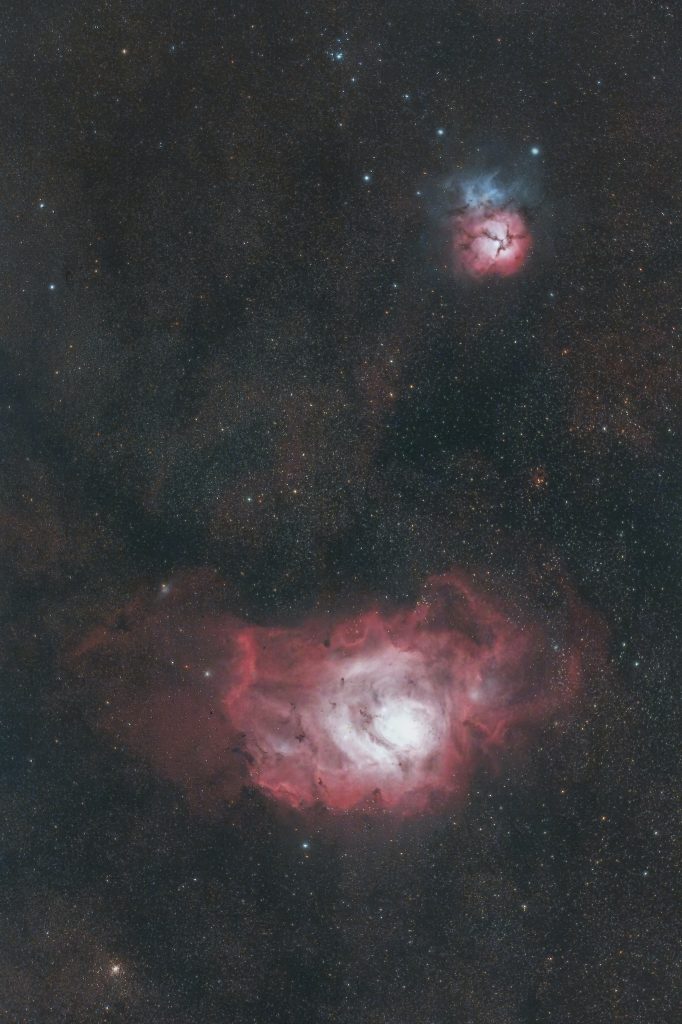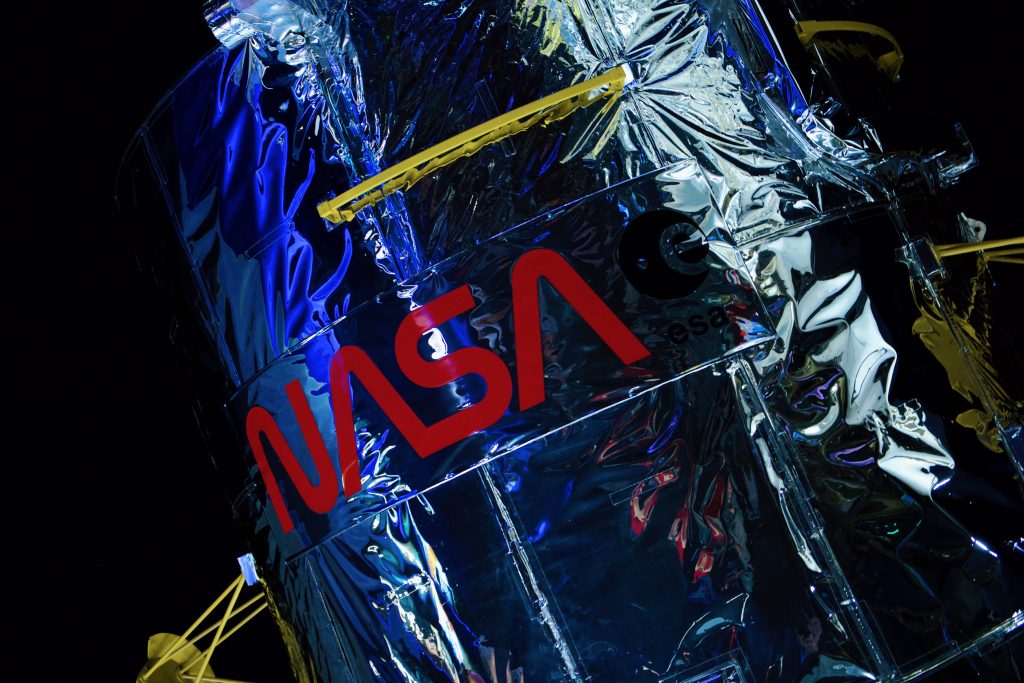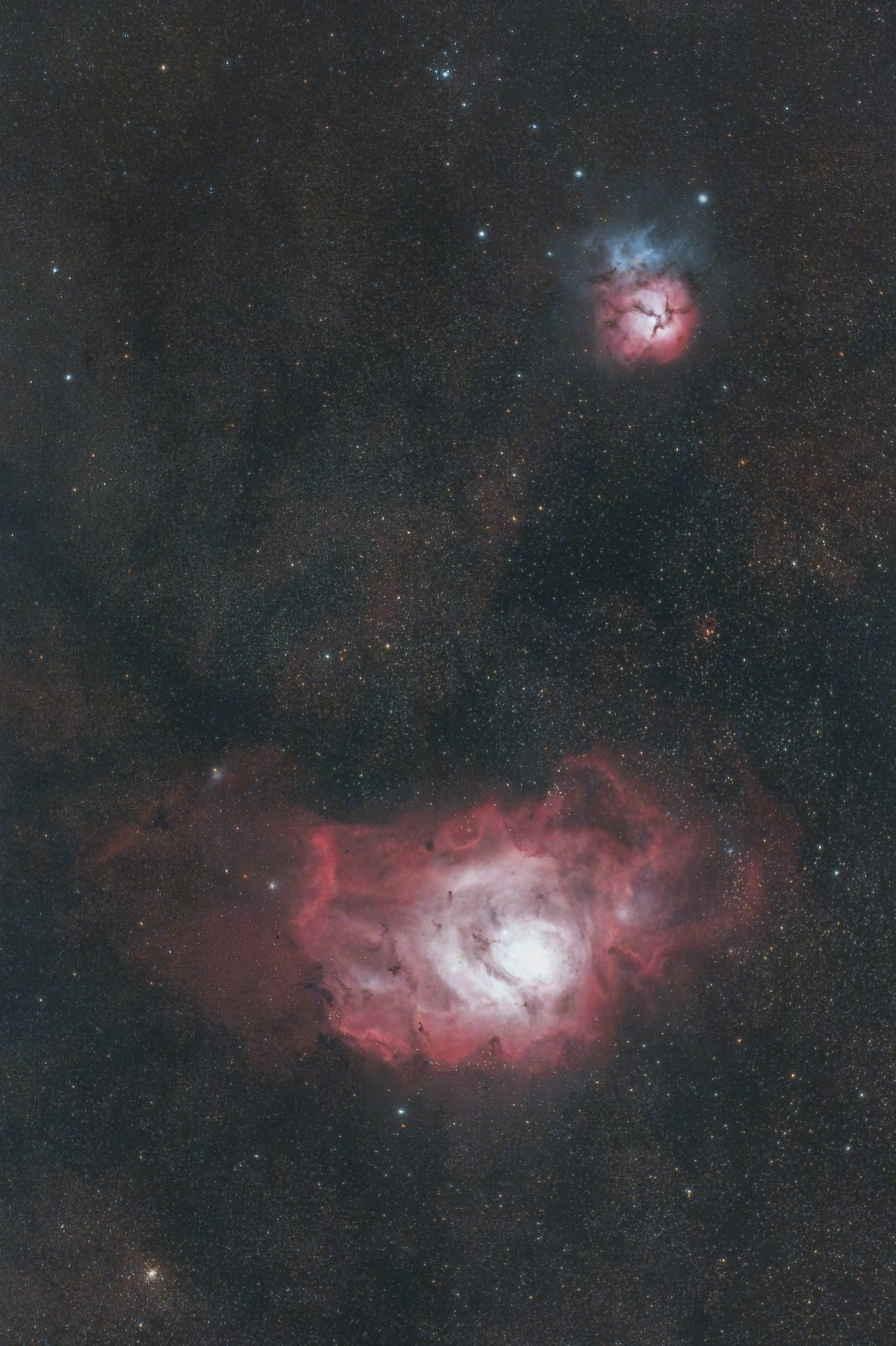Sure thing! So, you’re interested in observing the Virgo Cluster of galaxies with a telescope, huh? Well, you’re in luck because I’ve got some tips for you! First off, make sure you have a good quality telescope with a decent magnification. The Virgo Cluster is a collection of galaxies located in the constellation Virgo, so you want a telescope that will allow you to see them clearly.
Now, finding the cluster can be a bit tricky, but don’t worry, it’s not impossible! Look for the brightest star in the constellation, which is Spica. Once you’ve spotted Spica, scan your telescope in the surrounding area. You should be able to see a group of faint fuzzy patches, and those are the galaxies within the Virgo Cluster. Take your time to observe each galaxy and see if you can spot any interesting details or structures within them. And remember, patience is key when it comes to stargazing!
So, get your telescope ready and have fun exploring the wonders of the Virgo Cluster of galaxies! Happy observing!

Choosing the Right Telescope
When it comes to observing the Virgo Cluster of galaxies with a telescope, choosing the right equipment is crucial. One of the first factors to consider is the aperture size of the telescope. The aperture size determines how much light the telescope can gather, which directly impacts the clarity and brightness of the images you will see. For observing distant objects like galaxies, a larger aperture is generally recommended.
In addition, opting for a reflector telescope can be advantageous for observing the Virgo Cluster. Reflector telescopes use mirrors to gather and focus light, offering excellent image quality and versatility. They are also typically more affordable compared to other types of telescopes, making them a popular choice among amateur astronomers.
Another factor to consider is the telescope’s magnification capabilities. While it might be tempting to go for the highest magnification possible, it is important to ensure sufficient magnification for observing galaxies in the Virgo Cluster. High magnification may result in a loss of image brightness and clarity, especially when observing faint objects like galaxies. Therefore, finding a balance between magnification and image quality is crucial.
Understanding the Virgo Cluster
Before setting out to observe the Virgo Cluster, it is helpful to have a basic understanding of its composition and the key galaxies within it. The Virgo Cluster is a massive collection of galaxies located approximately 54 million light-years away in the constellation Virgo. It contains hundreds of galaxies, including prominent ones like Messier 87 (M87) and Messier 49 (M49).
Learning about the composition of the cluster will give you a better understanding of the different types of galaxies you may come across during your observation. The Virgo Cluster is home to various types of galaxies, including elliptical, spiral, and irregular galaxies. Each type has distinct features and characteristics, providing a diverse and fascinating observational experience.
Identifying key galaxies in the Virgo Cluster will allow you to have specific targets to observe. Messier 87, for example, is a massive elliptical galaxy with a prominent jet of matter emanating from its center. Messier 49, on the other hand, is a bright elliptical galaxy with a well-defined halo. By familiarizing yourself with these galaxies and their unique features, you can enhance your observation and appreciation of the Virgo Cluster.
Determine Optimal Observation Time
To maximize your viewing experience of the Virgo Cluster, it is important to consider the optimal observation time. Firstly, consider the time of year. The Virgo Cluster is best observed in the spring months in the northern hemisphere. During this time, the Virgo constellation is high in the sky, providing an ideal viewing angle for observing the galaxies within the cluster.
Furthermore, check for ideal viewing conditions. Clear, dark nights with minimal atmospheric turbulence are ideal for observing distant objects like galaxies. On nights with poor weather conditions, such as high humidity or heavy cloud cover, the clarity and brightness of the galaxies may be significantly reduced.
Additionally, it is crucial to avoid light pollution when planning your observation sessions. Light pollution can wash out the faint details of the galaxies and make it difficult to appreciate their true beauty. Choose a location away from city lights or other sources of light pollution to fully immerse yourself in the observation of the Virgo Cluster.
Finding the Virgo Cluster
Finding the Virgo Cluster amidst the vast expanse of the night sky may initially seem daunting, but there are tools and techniques to aid in its location. One helpful tool is Stellarium software, which is a planetarium software that can simulate the night sky on your computer. By inputting your location and the desired observation time, Stellarium can provide a virtual representation of the night sky, making it easier to locate the Virgo Cluster.
Another useful resource is star charts and maps. These printed or digital resources display the positions of celestial objects, including galaxies within the Virgo Cluster. By referencing star charts and maps, you can navigate the night sky and pinpoint the specific regions where the galaxies are located.
Combining the use of software like Stellarium with star charts and maps will greatly enhance your ability to find and observe the Virgo Cluster of galaxies. With patience and practice, you will become more adept at locating this fascinating cosmic collection.

Observing Techniques
When it comes to observing the Virgo Cluster through your telescope, there are a few techniques that can enhance your experience. It is generally advisable to start with low magnification when observing galaxies. This allows you to get a wider field of view and better appreciate the context of the galaxies within the cluster. Starting with low magnification also helps in locating the galaxies and framing your observation.
Once you have located the cluster, it is recommended to focus on the brightest galaxies first. These galaxies often have more prominent features and details, making them ideal starting points for observation. By studying the brighter galaxies within the Virgo Cluster first, you can familiarize yourself with their characteristics and improve your ability to identify and appreciate the fainter galaxies.
Furthermore, take the time to study the structure of the Virgo Cluster. Galaxies within the cluster are not randomly scattered but are arranged in groups and clusters themselves. By observing the arrangement and structure of the galaxies, you can gain insights into the dynamics and interactions within the cluster. Look for patterns, bridges, and tails between galaxies, as these are indicators of gravitational interactions and mergers.
Photographing the Virgo Cluster
If you wish to capture the beauty of the Virgo Cluster through photography, there are a few additional considerations to keep in mind. Attaching a camera to your telescope allows you to capture long-exposure images of the galaxies within the cluster. This technique enables you to gather more light and reveal the intricate details of the galaxies.
Using long exposures is particularly beneficial for capturing the fainter regions of the galaxies and bringing out their structures. However, it is important to ensure that your telescope is properly aligned and tracking the sky accurately to prevent blurry images. Consider using a remote shutter release or a timer function to minimize vibrations caused by manually pressing the camera shutter.
Experimenting with different filters can also enhance the photographic results. Filters can be used to isolate specific wavelengths of light, such as hydrogen-alpha, which can reveal emission nebulae within the Virgo Cluster. By trying different filters, you can emphasize different features and enhance the overall composition of your photographs.

Preparing for the Observation Session
Before embarking on your observation session, it is essential to choose a dark location. Light pollution can greatly diminish the visibility of galaxies within the Virgo Cluster, so selecting a spot away from urban areas or other sources of light pollution will significantly enhance your experience. Seek out a location with minimal stray lights and a clear view of the night sky.
Once you have found the perfect location, ensure that your telescope is set up properly. Check the alignment of the optics, collimate the mirrors if necessary, and ensure that the mount is stable and properly balanced. Proper setup and alignment of your telescope will ensure optimal image quality and minimize any potential issues during your observation session.
Observation Session Tips
During your observation session, there are several tips that can enhance your overall experience. Allow your eyes to adapt to the darkness by avoiding bright lights and electronic screens before and during your observation. This allows your pupils to dilate, maximizing your ability to see faint details in the galaxies within the Virgo Cluster.
Taking breaks periodically throughout your observation session can also help to prevent eye strain. Observing for long periods without breaks can cause fatigue and reduce your ability to focus on the galaxies. Take a moment to rest your eyes, stretch, and rehydrate to maintain optimal observation conditions.
In addition, taking notes and sketches can be a valuable practice during your observation session. By documenting your observations, you can track your progress, note any interesting characteristics or patterns, and create a personal record of your astronomical journey. Sketching the galaxies can also help to solidify your understanding of their structures and enhance your observational skills.
Safety Precautions
While observing the Virgo Cluster, it is important to prioritize safety. Never look directly at the sun through your telescope, as it can cause permanent eye damage. Similarly, when observing the sun, always use dedicated solar filters or telescopes specifically designed for solar observations.
Protecting your eyes with proper gear is essential to ensure a safe and enjoyable observation session. Use high-quality eyepieces that provide adequate eye relief and minimize the risk of eye strain. Additionally, consider using a red LED flashlight instead of a regular white flashlight, as it helps to preserve your night vision while still providing sufficient illumination for your observation tools and equipment.
Furthermore, be mindful of potential tripping hazards in the dark. Set up your observation area in a clear and safe environment, away from loose cables, equipment, or obstacles that could cause accidents. It is also wise to inform someone about your observation plans and location, especially if you are going alone. This ensures that help is readily available in case of any unforeseen circumstances.
Joining an Astronomy Group
To further enrich your experience and knowledge of observing the Virgo Cluster, consider joining an astronomy group. Participating in group observations allows you to learn from experienced astronomers who can offer valuable insights and guidance. They may share their own techniques, provide recommendations for observing equipment, and help navigate the night sky.
In addition, sharing your own observations with the group can foster a sense of community and camaraderie among fellow astronomy enthusiasts. Discussing your findings, comparing notes and sketches, and engaging in scientific discussions can deepen your understanding of the Virgo Cluster and astronomy in general.
By joining an astronomy group, you not only expand your knowledge and skillset but also become part of a community that shares your passion for exploring the wonders of the universe. Whether through in-person meetings, online forums, or organized observation events, the opportunities for learning and growth are endless.
In conclusion, observing the Virgo Cluster of galaxies with a telescope offers a remarkable journey into the depths of our universe. By choosing the right telescope, understanding the cluster’s composition, determining the optimal observation time, finding the cluster in the night sky, employing various observing techniques, photographing the galaxies, preparing properly, and taking necessary safety precautions, you can fully immerse yourself in this awe-inspiring cosmic spectacle. Be patient, embrace the beauty of the galaxies, and enjoy the process of unraveling the mysteries of the Virgo Cluster.











